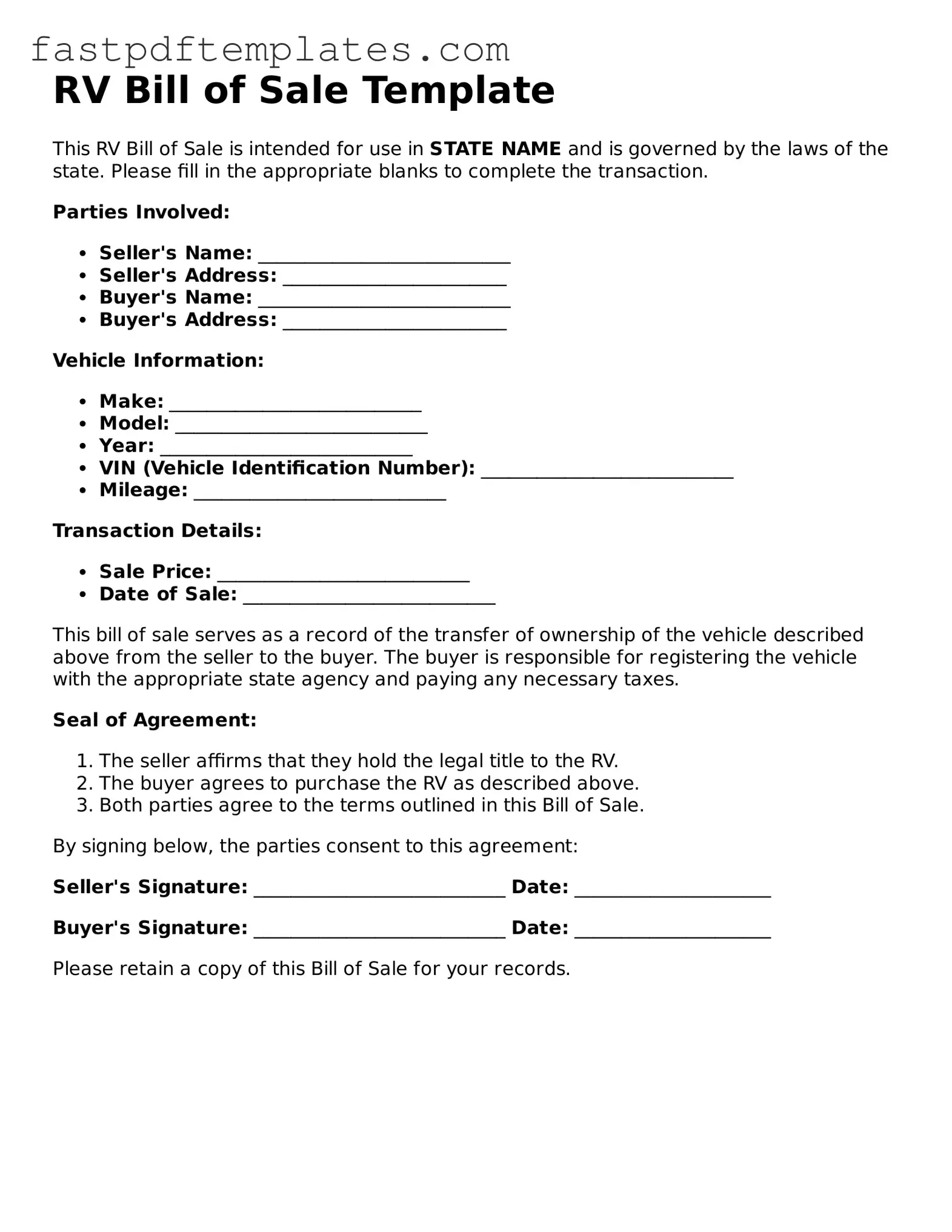RV Bill of Sale Template
This RV Bill of Sale is intended for use in STATE NAME and is governed by the laws of the state. Please fill in the appropriate blanks to complete the transaction.
Parties Involved:
- Seller's Name: ___________________________
- Seller's Address: ________________________
- Buyer's Name: ___________________________
- Buyer's Address: ________________________
Vehicle Information:
- Make: ___________________________
- Model: ___________________________
- Year: ___________________________
- VIN (Vehicle Identification Number): ___________________________
- Mileage: ___________________________
Transaction Details:
- Sale Price: ___________________________
- Date of Sale: ___________________________
This bill of sale serves as a record of the transfer of ownership of the vehicle described above from the seller to the buyer. The buyer is responsible for registering the vehicle with the appropriate state agency and paying any necessary taxes.
Seal of Agreement:
- The seller affirms that they hold the legal title to the RV.
- The buyer agrees to purchase the RV as described above.
- Both parties agree to the terms outlined in this Bill of Sale.
By signing below, the parties consent to this agreement:
Seller's Signature: ___________________________ Date: _____________________
Buyer's Signature: ___________________________ Date: _____________________
Please retain a copy of this Bill of Sale for your records.
